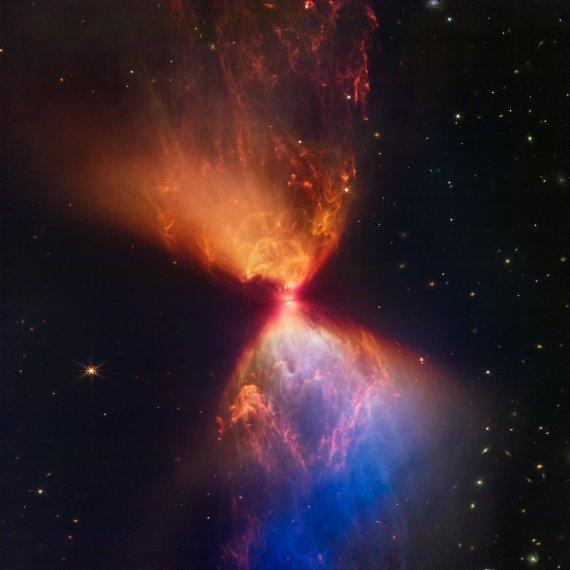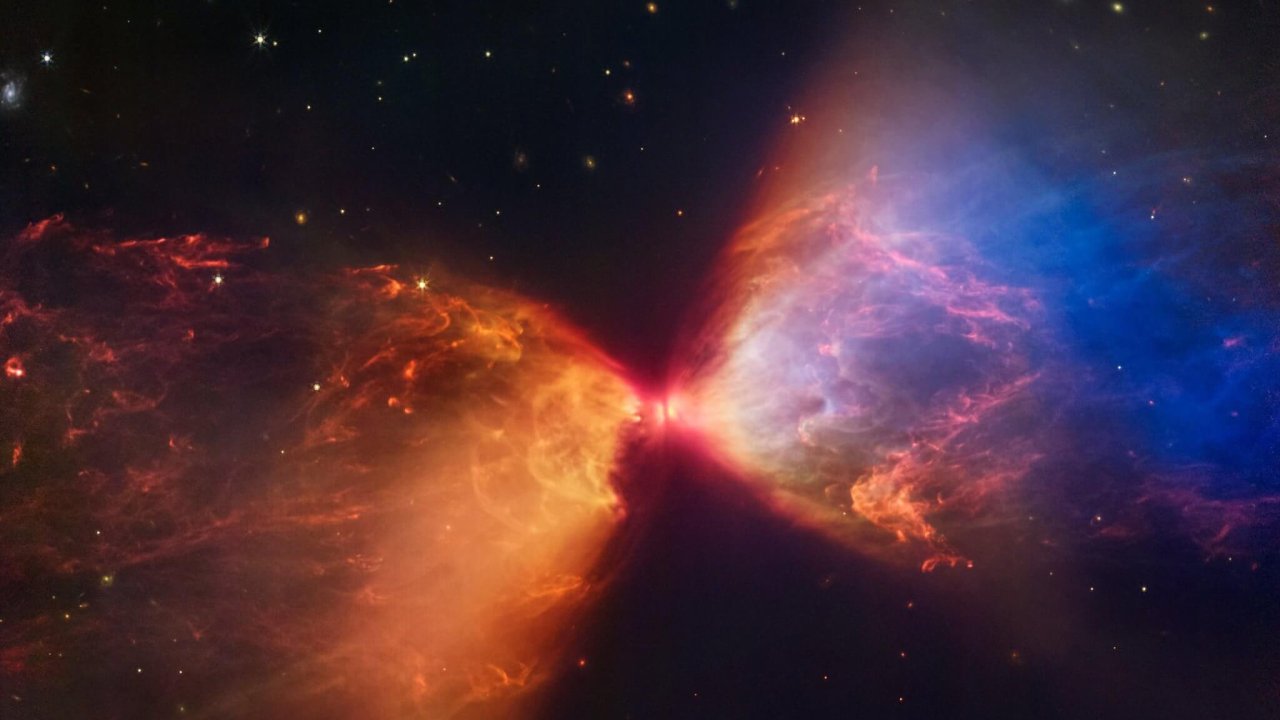Witness the countdown to a new star ⏳.
Again, the The James Webb Space Telescope is an infrared observatory orbiting the Sun about 1 million miles from Earth to find the first galaxies that formed in the early universe and to see stars forming planetary systems. https://solarsystem.nasa.gov/missions/james-webb-space-telescope/in-depth/ has produced a stunning image. What we are witnessing here are the beginnings of a new star.
Birth of a protostar
Hidden in the neck of this “hourglass” of light are the very beginnings of a new star — a protostar. The clouds of dust and gas within this region are only visible in infrared light, the wavelengths that Webb specializes in.
This protostar is a hot, puffy clump of gas that’s only a fraction of the mass of our Sun. As it draws material in, its core will compress, get hotter, and eventually begin nuclear fusion — creating a star!
Size of our solar system
See that dark line at the very center of the “hourglass”? That’s an edge-on view of a protoplanetary disk, or the disk of material being pulled into the star as it forms. It’s about the size of our solar system and may eventually clump into planets, giving us a window into our solar system’s history.

Light from the protostar illuminates cavities in the dust and gas above and below its disk. (Think of flashlights pointing in opposite directions, each shining a cone of light.) The blue areas are where dust is thinnest, while orange represents thicker layers of dust.
These blazing clouds within the Taurus star-forming region are only visible in infrared light, making it an ideal target for Webb’s Near-Infrared Camera (NIRCam).
About the Telescope
The James Webb Space Telescope is the world’s premier space science observatory. On its website, NASA states that Webb will solve mysteries in our solar system, look beyond to distant worlds around other stars, and probe the mysterious structures and origins of our universe and our place in it. Webb is an international program led by NASA with its partners, ESA (European Space Agency) and the Canadian Space Agency.
More to explore
In case you missed it, earlier this year they released a number of mesmerising images & videos.
Hauntingly beautiful in any light, we can’t help but return to the Pillars of Creation over and over. And each time, we deepen our understanding of this region. With this new MIRI image, astronomers now have higher resolution data in mid-infrared light than ever before. pic.twitter.com/wfY8tp3I8y
— NASA Webb Telescope (@NASAWebb) October 28, 2022
What if you could hear Webb data?
— NASA Webb Telescope (@NASAWebb) August 31, 2022
Here, the “Cosmic Cliffs” are sonified, or translated to sound. Blue gas and dust sound windy, while a melodic line represents the rise and fall of the “mountain range.” Louder tones represent brighter light. More: https://t.co/yeOM4bUjoh pic.twitter.com/qr9WzWVWvN
👀 Sneak a peek at the deepest & sharpest infrared image of the early universe ever taken — all in a day’s work for the Webb telescope. (Literally, capturing it took less than a day!) This is Webb’s first image released as we begin to #UnfoldTheUniverse: https://t.co/tlougFWg8B pic.twitter.com/Y7ebmQwT7j
— NASA Webb Telescope (@NASAWebb) July 11, 2022
Ten things you can do to help save planet Earth
We can't help NASA with its amazing work. But what we can do is take much better care of our home: planet Earth. Need ideas on where to start? We give you ten things you can do today.
